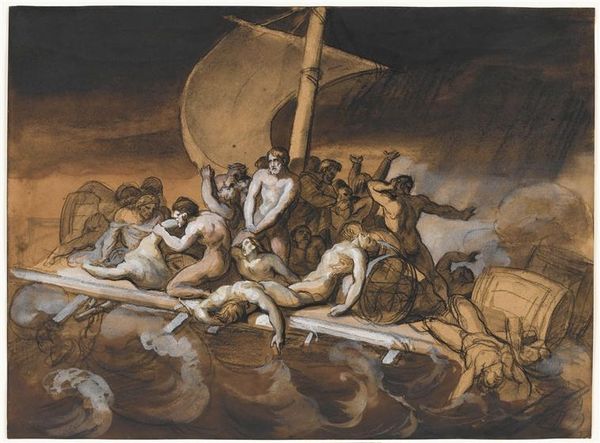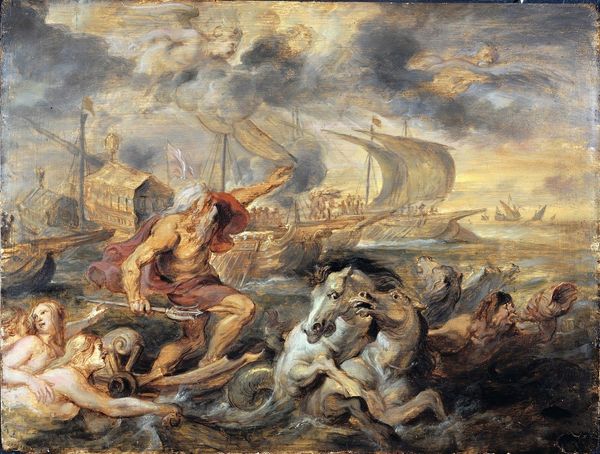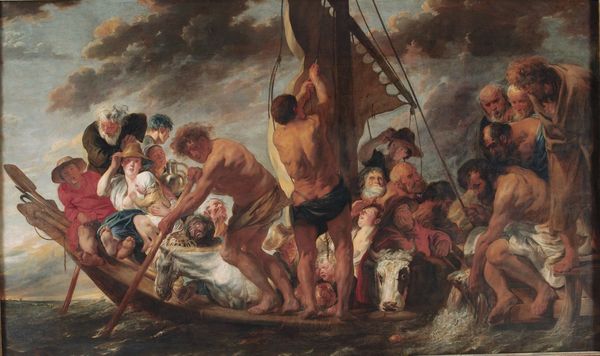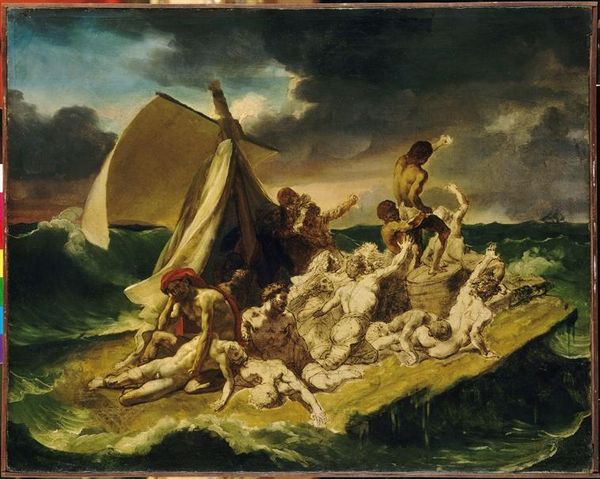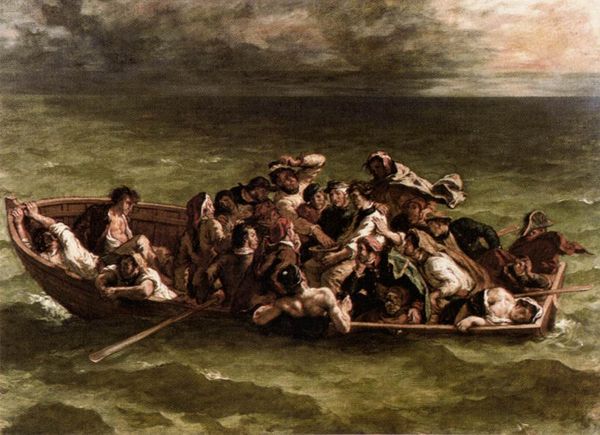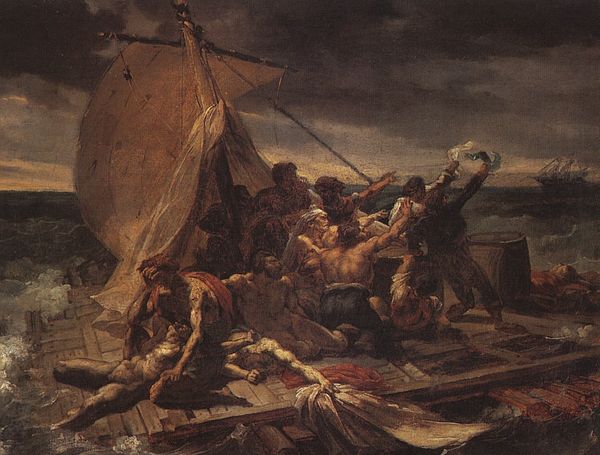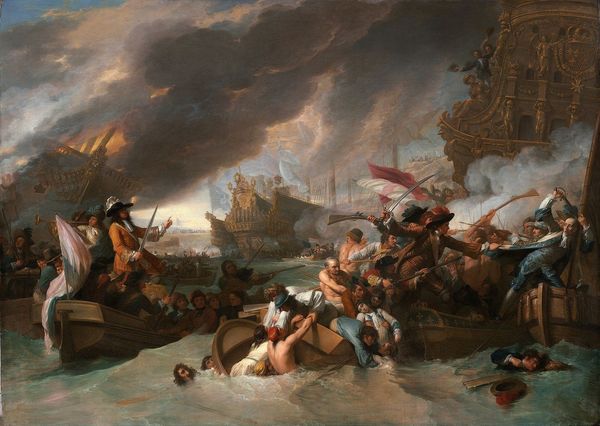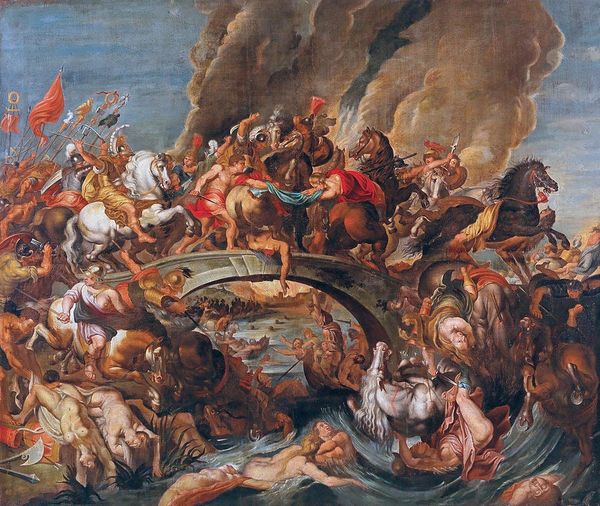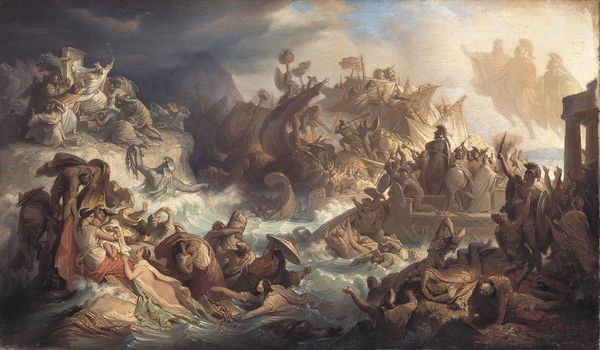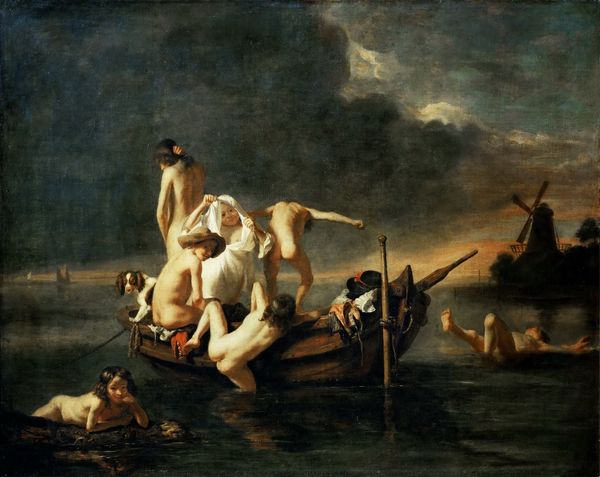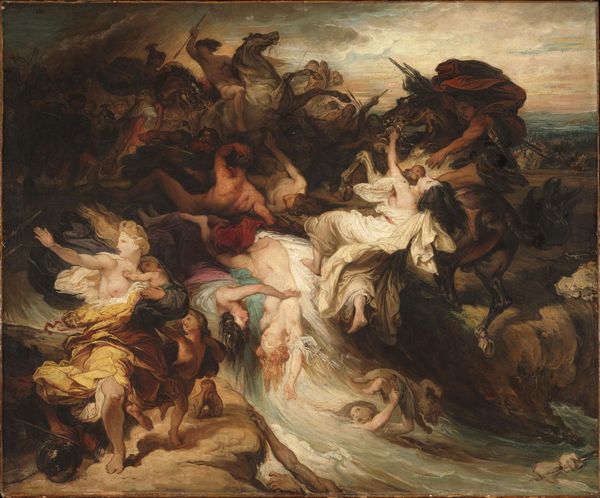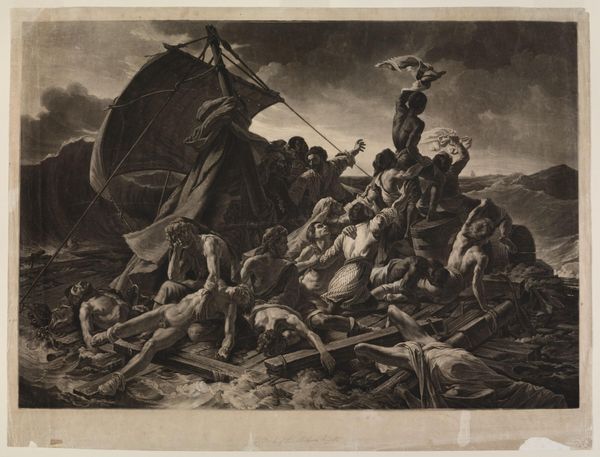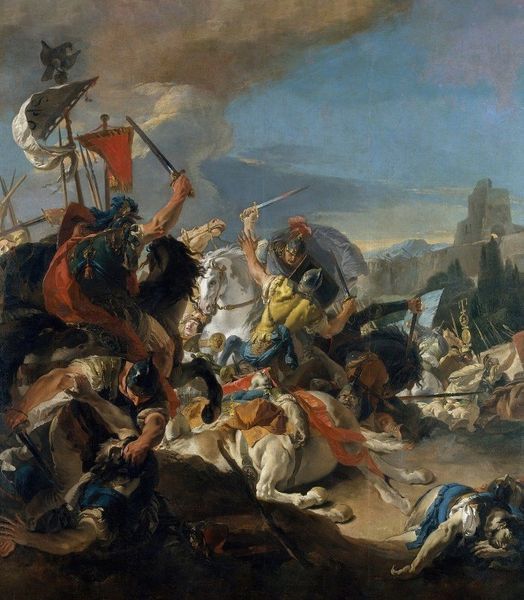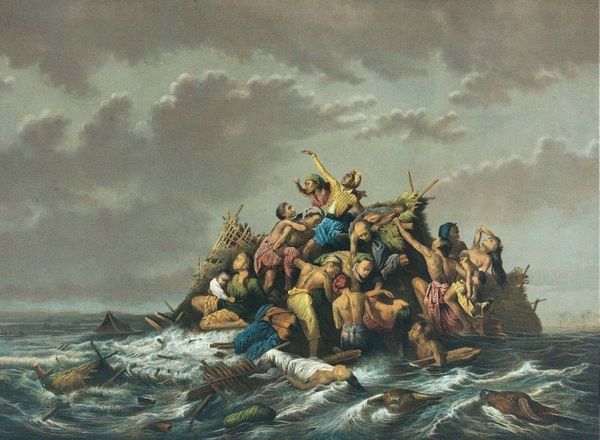
painting, oil-paint
#
figurative
#
narrative-art
#
painting
#
oil-paint
#
landscape
#
figuration
#
romanticism
#
history-painting
Copyright: Public Domain: Artvee
Théodore Géricault’s iconic oil painting ‘The Raft of the Medusa’ (1819) measures in at an imposing 16 by 23 feet. Yet it is not only the size of the painting that is immense. This radical work is a momentous and heavy characterisation of tragedy and human drama. The painting depicts the infamous events following the wreck of the Méduse, a French ship which was beached on the Bank of Arguin (today the coast of Mauritania) in 1816. Its passengers were quickly evacuated on a flimsy wooden raft. Gericault created a sculptural model of the raft before he began painting, ensuring a realistic appearance. Here, the artist emphasises the instability of the makeshift raft against the powerful waves of the ocean. Of the over 150 people evacuated on the raft, just 15 survived. These 15 were forced to turn to cannibalism, eating the bodies of the deceased to prevent complete starvation. This tragic desperation is made visible in the contorted gestures of the surviving figures. Their arms are outstretched, reaching outwards and towards the moody sky as if they are lamenting. This work was not commissioned. Théodore Géricault (1791-1824) chose a well-known and tragic subject to maximise public interest in his vast oil painting. He meticulously researched and planned the work – going as far as to visit morgues in order to study the appearance of actual dead bodies. This can be seen in the grim realism and shocking detail of the greenish bodies which litter the floor of the raft. He also interviewed two of the survivors of the wreckage. This macabre painting is overwhelmed by a tone of complete disaster and hopelessness. This is reinforced by the symbolism of the black clouds which suffocate the skyline. In the background, we see a rising or setting sun. Géricault has painted the sun in shades of reddish orange which suggest impending danger and peril. There is no heroic figure or positive moral message in ‘The Raft of the Medusa’. Rather, the dominant force in the painting is the terrifying power of nature. The extreme unpredictability of nature is a key theme in French Romanticism, which flourished throughout the first half of the nineteenth century. The painting proved immediately controversial when it was first exhibited in Paris. It was awarded a golden medal, yet numerous critics responded with disgust and outrage. This suggests that ‘The Raft of the Medusa’ violated expectations and subverted conventions relating to which subjects were acceptable to paint. What do you think? Did Géricault go too far with the gruesome realism of this painting? 💭👇 Editor: Lucy Jude Grantham
